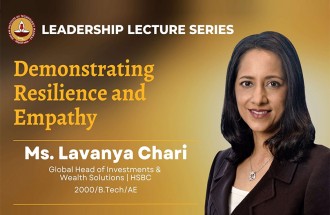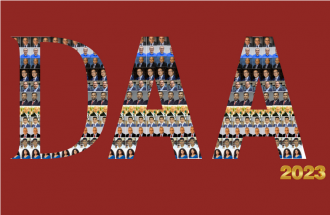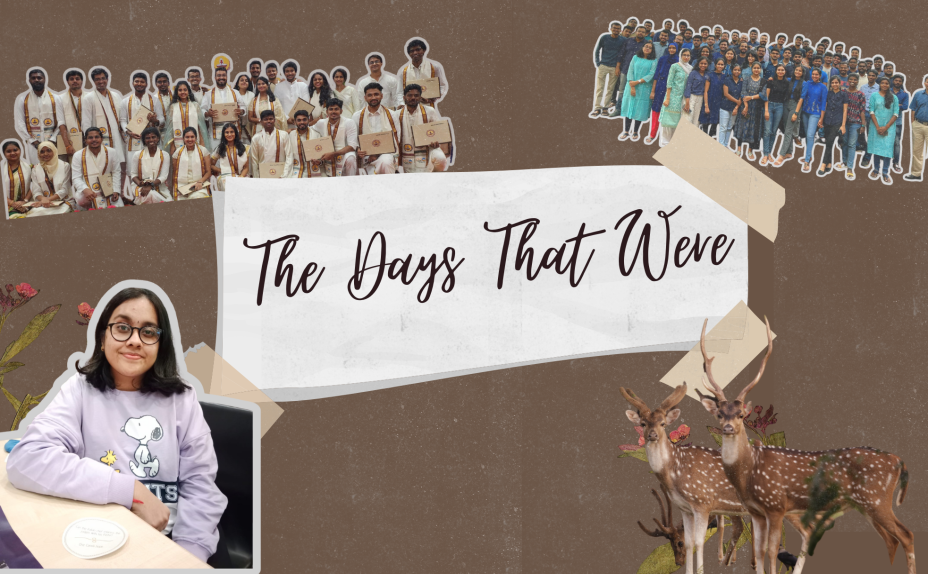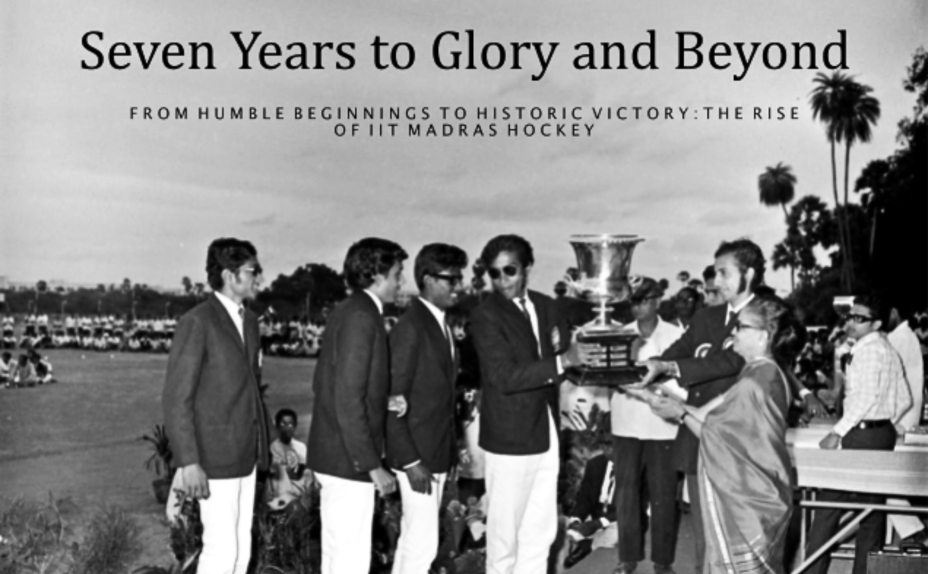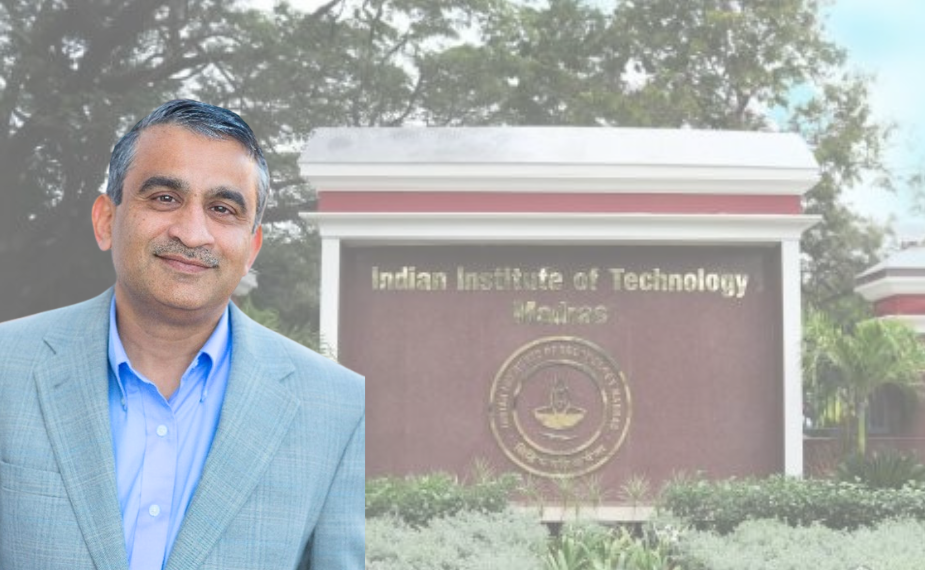
Prof. Madhav Marathe: “Never give up; life is much more than GPAs and ranks.”
1) What was your inspiration for getting into IIT Madras and joining Computer Science Engineering in the latter part of the 1980s, a period in which the degree was not very prevalent in India?
Getting into IIT is always a dream for youngsters in India. Growing up in Bhopal, a relatively small town (then), I was not aware of IIT much outside of what I had heard about it through a few of my close friends during my last year of high school. I had never touched a computer before but heard about it and hence wanted to learn more about it. Computers seemed fascinating. I had heard about their ability to perform complex calculations but I really did not know much about Computer Science (CS) before joining IITM. Joining CS at IITM was to some extent a lucky event. My friends told me that IITM had a good CS department, which is what motivated me to join. I was also interested in pursuing Physics, but in the end, I decided to study Computer Science.
2) What role has IIT Madras played in guiding and picturing your personal and professional life? What is your biggest takeaway from the four years of your college life?
IITM has played a very important role in determining where I am today. First, the IIT brand is unmatched and I am a beneficiary of this without a doubt. Working with some of the most talented individuals and being challenged by professors to undertake non-trivial problems naturally gives you the confidence that you can work productively with the best in the world. The ecosystem was unique: there was healthy competition but a strong level of collaboration. The teachers were some of the best in India. They exposed students to new areas, shaping one’s ability to think and to do research. Professors Pandurangan (my thesis advisor), Muthukrishnan, Krithivasan, Nagarajan, Yegnanarayana, and Mahabala have all had a lasting impact on my career. Additionally, Professor Balakrishnan (even though he did not teach us), Professor K. R. Parthasarthy, and Professor Rajaram were my role models. I would like to mention that I was never one of the top-ranking students in the class and often struggled with my coursework. My classmates were brilliant, but more importantly, they were also helpful and supportive. I learned four key things at IIT Madras that have continued to shape my personal and professional life: (i) First, it is not a good idea to try and ape others, you have to find your own way of doing things. (ii) Second, it is important to experience failure and learn from it. I experienced failure early on. I had always done well in school, but IIT was a shock as everyone was academically strong and I was not prepared. But in a strange way, as I adapted, I actually became more resilient. (iii) Research is a game of perseverance and discipline, you have to learn to make a long-term commitment and be willing to chip away at problems even if the progress is slow and you have setbacks. (iv) True friends are hard to find, I made lifelong friends at IIT and they have played a critical role in shaping my life for over 30 years now.
3) How did you enter the field of research, and what prompted you to take up transdisciplinary team science, and projects related to it?
My research career can be divided into four distinct time periods.
The first period lasted about a year and a half at IIT. I did my BTech thesis with Professor Pandurangan and collaborated with R. Ravi primarily and with Aravind Srinivasan and R. Mahesh as well. Ravi, Prof. Pandurangan, and I published two simple papers together; but they were important for me. This was my first experience in doing research. Prof. Pandurangan had a knack for getting the best out of undergraduate students at IIT. He has played an influential role in the lives of so many of us. Beyond solving problems, we learnt the art of doing research that involved reading papers, thinking about problems, working in a team, failing to solve problems, writing papers, and getting rejections; the last one being an important component of any peer-reviewed activity. Ravi and Aravind have been my close friends and colleagues since then. They are both brilliant and have such diverse ways of thinking about problems, which I have been able to experience firsthand as we have continued to work together on a number of problems in network science.
My second period of research was the time I did my Ph.D. at University at the University at Albany – State University of New York. I was extremely lucky to have gone to Albany and have the opportunity to work with some of the best researchers in theoretical computer science in the world. My advisors Professors Harry Hunt III and Richard Stearns and along with Professors Daniel Rosenkrantz and S. S. Ravi patiently taught me all aspects of theoretical computer science but also how to do research. Each of them is so different in the way they approach problems, and that diversity was very refreshing. They remain my lifelong mentors. Their work ethic, patience, humility, and incredible talent are hard to find. I owe much of my success to them. My studies at Albany allowed me to develop a deeper understanding of the subject and shaped my ability to think beyond individual problems and study a broad topical area within theoretical computer science.
The third phase of my research career was spent at the Los Alamos National Laboratory (LANL). An amazing place indeed and very different from all the earlier places I had been. At LANL, I was surrounded by outstanding scientists from various fields. As the field of Physics dominated the overall atmosphere, I was exposed to a new approach to problem-solving. I was fortunate to have been mentored by three superb individuals: Dr. Emanuel Knill who went on to do amazing work in quantum computing, Dr. Vance Faber a world-class combinatorist and Professor Chris Barrett, a world-class complex systems scientist. I started working in a transdisciplinary team science-oriented environment as a result of my time at LANL. I was fortunate to have worked with some outstanding colleagues, including Anil Vullikanti, Chris Barrett, Stephen Eubank Henning Mortveit, Bryan Lewis, Ketih Bisset, Kai Nagel, Riko Jacob, Goran Konjevod, Myron Stein, Doug Anson, Stephan Eidenbenz, Richard Beckman, Achla Marathe (who is also my wife) and Paula Stretz. I continue to work with many of these researchers even now. The environment at Los Alamos encouraged us to take on “big scientific problems”; problems that go beyond the expertise of any single person and require collaborative effort by a team. Over the years at Los Alamos, I learned that working in a team is a matter of routine and essential to solving complex system problems. The diversity of viewpoints that one hears while working in a team is something to cherish. It was an amazing time for me. I realized this way of doing science fits my taste and expertise, and I have since continued to embrace transdisciplinary team science.
The fourth phase of my research career comprises time I spent as a faculty member at Virginia Tech and now at the University of Virginia. We built on things we learnt at Los Alamos and added new components such as a deeper involvement of students and thus an important responsibility in terms of mentoring, a continued push to apply ideas to problems of societal relevance but bringing to fore the role of computing in real-time decision making, and a stronger interaction with policymakers that advanced the field of policy informatics. Like the earlier periods, I was one again fortunate to have worked with some outstanding colleagues, including Naren Ramakrishnan, Jim Thorp, T. Murali, and Jeff Reed. I also was fortunate to have outstanding mentors, including Professor Arun Phadke (VT), Professor Moshe Vardi (Rice), Professor Simon Levin (Princeton), and Professor Rita Colwell (UMD). My work in epidemic science, complex systems, power systems, and basic computing was significantly influenced by them and their work.
Each phase has been important in its own way and has allowed me to learn new things. I want to keep learning and adapting to face new challenges. I believe the role of team-oriented research will only increase over time as we as a society take on new challenges stemming from globalization, climate change, and political instability.
I want to underscore the importance of transdisciplinary team science again. As the field of computing moves from fundamental discoveries in computing to applications of computing to make fundamental discoveries in other fields (e.g., Biology, Social sciences, Health, and Engineering), it will become progressively more important to work in teams that cross-disciplinary boundaries – we see this already in Biology and Physics.
4) The interconnection between technology and social impact in your professional career is evident. How do you visualise the coupling of both and its significance in the contemporary world? Also, could you describe more about BIST Networks which you are currently involved with, and how it caters to the needs of society as a whole?
I started my research in theoretical computer science with a focus on developing efficient algorithms and studying the inherent limitations of finding solutions to problems efficiently using limited computational resources. My work was fundamentally shaped by my teachers at Albany and IIT; Professor Richard Stearns (winner of the 1993 ACM Turing Award with Prof. Juris Hartmanis for their seminal work that defined the field of Computational Complexity), Daniel Rosenkrantz, Harry Hunt III, and S. S. Ravi at Albany had done foundational work in this area and I was naturally attracted to it. I had focused on graph theory at IIT and found networks interesting. Professor Pandurangan and Professor K. R. Parthasarathy taught us graph theory which started this journey. My friends R. Ravi, Aravind Srinivasan, and Venkatesh Radhakrishnan at IIT and Albany provided additional impetus for work in this area.
My tenure at Los Alamos was a game changer; my work with Chris Barrett and other colleagues at LANL started exploring the role of computation in addressing real-world societal problems. Chris hired me in the TSA division to establish and lead the computational theory of discrete simulations and the development of methods and tools for simulation-based representation, analysis, and generation of large societal infrastructures. I was instantly attracted to the idea; the idea of doing rigorous computing-related research and making a societal impact was just the right combination I was looking for.
BIST networks, that is, networks that span biological, informational, social, and technical applications, are central to society. With companies such as Facebook and Google, everyone now is aware of and understands networks, which have become ubiquitous. At Los Alamos, the work grew tremendously: first I moved from studying a single network to the study of multiple networks; multiplicity in type, scale, shape, and function. Second and importantly, motivated by work in Physics and complex systems, we started studying dynamical phenomena over networks. Traffic over roads, packets over the Internet, messages in Whatsapp, and the spread of diseases over social contact networks are all examples of complex dynamical phenomena that use and shape the network.
Computational network science is a field that aims to study networks through the lens of computer science; this means it is focused on the development of efficient algorithms to synthesize and analyse them; devising AI-driven methods for inferring their properties; and developing supercomputing-based solutions to reason about them. As global business and travel increases, as cities become more dense, and as new technologies are developed, networks will become even more central to our daily lives. Failures of systems we take for granted (e.g., electricity delivered to our houses using networks) will have catastrophic social, health, and economic impact. The supply chain problems that are currently seen in the world are another example of global network effects.
Our group studies networks that arise in diverse areas such as pandemic planning and response, next generation energy systems, urban transport systems, and agricultural systems, to name just a few. Examples of questions we study include: (i) how can we be better prepared for responding to future pandemics; (ii) how can we prevent and respond to cascading power failures; (iii) how can we build more efficient multi-modal transportation systems in light of electric and autonomous vehicles; (iv) how we can respond to large scale human-initiated and naturally occurring disasters. Each of these questions entails the study of appropriate BIST networks and helps us advance the field of computational network science.
5) Your contribution during the pandemic is remarkable. Could you briefly explain how your research expertise contributes to the COVID-19 planning and response efforts? Is there a specific target group which benefits from your efforts?
Currently, I am co-leading a large team of approximately 80 researchers and students at UVA and its partner institutions in the development of innovative HPC-oriented decision support systems for COVID-19 planning and response. For over three years, the team has been providing modeling and analytical support to the federal and state agencies as they respond to the pandemic. We support: (i) the Department of Defense (DoD); (ii) the Centers for Disease Control (CDC), (iii) the National Science Foundation, and (iv) the Commonwealth of Virginia.
Our team is one of the lead analytical groups that supports the Defense Threat Reduction Agency (DTRA) in its pandemic response efforts. The DoD incorporates these modeling products into the recommendations provided to a range of federal and state agencies (about 50 different units).
The work done with CDC is a part of the CDC-funded Forecasting hub coordinated by Reich’s Lab (led by Professor Nicholas Reich, Department of Biostatistics and Epidemiology at the University of Massachusetts). Since the summer of 2020, we have provided weekly forecasts of infections for all of the US at a county level as well as the Scenario modeling initiative --- the later work was published in a Morbidity and Mortality Weekly Report (MMWR) and reported to the national COVID leadership.
The team also serves as the primary modeling group for the state of Virginia in its planning and response efforts. The team also advises the Virginia Department of Emergency Management, the Virginia Department of Health (VDH), and various local and state hospitals, including several departments at the University of Virginia School of Medicine, James Madison University, and Virginia Commonwealth University. Several tools, dashboards, data products, and simulations have been developed by the team members; check out https://covid19.biocomplexity.virginia.edu/ for further details.
The team was awarded the highly prestigious NSF Expeditions grant to advance computational epidemiology; NSF has also funded us to set up Pandemic Research for Preparedness & Resilience (PREPARE): a virtual organization to foster increased discussion and collaboration among CISE pandemic researchers which is part of a National Science Foundation (NSF) Computer and Information Science and Engineering (CISE) initiative to coalesce a community around the topic of pandemic preparedness. The division also received five RAPID awards pertaining to COVID-19.
The team has received letters of commendation, including ones from VDH and DTRA from several agencies acknowledging their efforts. Examples of impactful work include: (i) analytics that supported decision-making pertaining to field hospitals saving the state between 60 and 100 million dollars, (ii) analytical methods to support the contact tracing team, and (iii) methods for strategic placement of mobile vaccine distribution sites.
We have also been working closely with scientists in India, specifically researchers at IISc (Professor Rajesh Sundaresan and his group; incidentally, Professor Sundaresan is also an alumnus of IITM), Google and ISI Bangalore (Professor Siva Athreya). The work with them has focused on questions and models specific to India.
Our work on pandemic science has brought to the fore three important roles played by computing and AI. Interestingly, I have been working on related topics since around 2002 but wasn’t able to convince many researchers about the importance of this effort. But the pandemic has changed all that and there is substantial interest at various institutions in India and abroad to establish core capabilities in this topical area.
6) The major challenges faced by the world today are in the health sector. In your opinion, what are the possibilities of Artificial Intelligence in healthcare, and in the prevention, preparedness, and control of a pandemic?
AI provides potentially new ways to overcome some of the long-standing problems in health care. Let me start with pandemic planning and response. Here AI can play a multi-faceted role, from better models to support real-time decision-making, planning, and response, to the development of new therapeutics, to advances in image processing, and finally, to building worldwide disease surveillance networks for early detection and analysis. Additionally, AI-based tools can lead to technological solutions for tasks such as evaluating risk, contact tracing, and accessing therapeutics, which will benefit ordinary citizens. On the broader topic of health care, I believe AI can make a significant impact by enabling digital medicine, development and identification of new drug targets, precision medicine, and developing fundamentally new class of data-driven multi-scale, multi-level models to understand health in a holistic manner.
However, I should also express a word of caution. As much as AI can help, and as with any technology, people can and have already begun misusing AI to disrupt our society as it pertains to health. Examples include the use of social media for fake news about pandemics, vaccine hesitancy, cyber-attacks on personally identifiable health information, the potential use of synthetic biology for nefarious purposes such as bioterrorism and the use of information collected during pandemics and other emergencies for surveillance and curtailing freedom of speech.
7) What is the major difference you have noted in the academia in India and the U.S? How do you think India can develop its Research and Development arena to a higher, competent level?
India has an amazing talent pool. This is evident from the success of Indians not just in India but abroad. I see four key issues where India could improve to be more competitive: (i) make the system far less bureaucratic, identify talent and give them a fair bit of autonomy (while ensuring that certain metrics are met) (ii) develop methods to produce teachers of the highest quality; our tradition has always respected teachers but I think this is being lost (iii) have a culture of calculated risk-taking – I see that youngsters are much more open about this and I hope this trend continues and (iv) value, incentivize and promote careers in R&D and give the scientists autonomy but with well-defined expectations to do high-quality work --- there is a delicate balance between autonomy and nudge. Furthermore, failure should be respected and accepted so far one has made a genuine attempt.
8) How was your life at the Institute? Could you share some memorable experiences from your institute life? Were you involved in any cultural, tech, or sports fests during those years?
I thoroughly enjoyed my days at IIT. My classmates and hostel mates are an incredible bunch. I have made lifelong friends too many to mention all but still want to mention a few: Guhan, Guru, Ranga, Rajib, Kanta, Addanki, Ravi, Aravind, Satish, and Anand. We used the term “hanging out” to mean spending time together chatting about a range of topics. I have a lot of memories. Some general ones include Saturday dinners followed by OAT movies, Mardi Gras, Inter-IIT meet, various quiz competitions and music shows on campus. I will mention just three specific incidents due to space: the countless hours I spent with R. Ravi listening to music and doing research, the time Sridhar Ramaswamy and I spent during the first weeks trekking back from Mount Road and taking rides from trucks, etc. as we accidentally left behind our badminton rackets, the time we spent preparing for the Inter-IIT meets and Holi celebration when the bus took us to the Besant Nagar Beach. Beyond that, I enjoyed playing sports and represented IITM each year during the Inter-IIT championship (we did very well in three of the four years). I also represented IITM in Hockey during the last year.
9) Any words of wisdom or advice for young, aspiring researchers?
I think the students coming in are already very accomplished. I have five simple pieces of advice: (i) never give up; life is much more than GPAs and ranks, (ii) find things you are passionate about and the rest will follow, (iii) be humble, (iv) have an open mind and listen to a diverse collection of ideas and thoughts and lastly, (v) never stop learning.
BIO
Prof. Madhav Marathe
Prof. Madhav Marathe
1989/B.Tech/CS
Distinguished Professor, University of Virginia USA
Shri Madhav Marathe received his Bachelor’s in Computer Science and Engineering from IIT Madras in 1989, followed by a doctorate in Computer Science from University at Albany–SUNY in 1994. Currently, he serves as an Endowed Distinguished Professor in Biocomplexity and as the Director of the Network Systems Science and Advanced Computing (NSSAC) Division of the Biocomplexity Institute and Initiative (BII) at the University of Virginia, Charlottesville (UVA), Virginia, USA. Along with these, he is also a tenured Professor of Computer Science at the University of Virginia. Being a passionate advocate and a practitioner of transdisciplinary team science, he established and pioneered a slew of transdisciplinary projects and groups over his 28-year professional experience.
He has demonstrated unparalleled research expertise throughout his career which is channelled towards creating a greater social impact. As illustrated over his exemplary career, his research focus is to understand the fundamental principles that govern the design, analysis, control, and optimization of complex networks by undertaking a team science approach and by developing innovative solutions having a significant impact on society. His research interests span over Network Science, Machine learning, Artificial intelligence, High-Performance Computing (HPC), Multi-Agent Systems and Computing Science that aims to develop reliable, secure, and sustainable socially coupled systems. He has published 500 articles in peer-reviewed journals, workshops, conferences and as technical reports. Along with that, he is deeply involved and passionate about mentoring, training and guiding students. It is evidenced by his cohort, which consists of more than a half dozen staff scientists, and (co)-advised 33 doctoral students, 24 MS students and 15 postdoctoral fellows.
His current research interest lies in understanding the general principles that govern the design, analysis, control, and optimization of large biological, information, social, and technical (BIST) networks. Moreover, Dr. Marathe is also committed to COVID-19 planning and response efforts where he co-leads a team of researchers at BII, University of Virginia to develop innovative HPC-oriented decision support systems that provide modelling and analytical support to state and federal agencies’ pandemic response. He also envisions the next decade where he is planning to navigate his expertise and knowledge in three specific areas of interest which include (i) bio-social complexity, precision, global, and one health; (ii) autonomous systems and man-machine symbiosis; and (iii) resilient and sustainable social habitats.
For his exemplary accomplishments in Academia and his immense contributions in COVID-19 response efforts and BIST Networks, IIT Madras and its alumni are proud to bestow the Distinguished Alumni Award for the year 2022 upon Shri Madhav Marathe.


